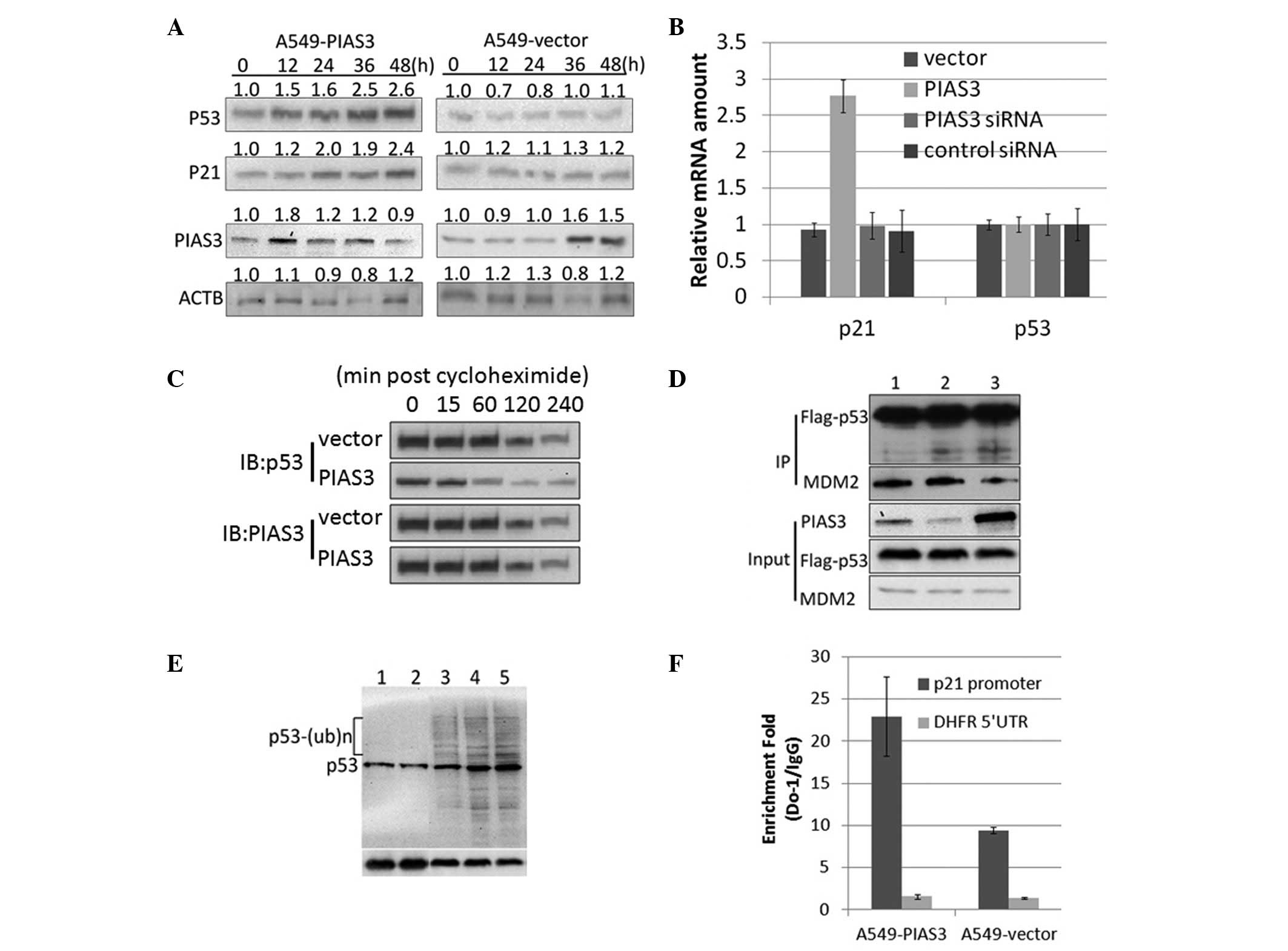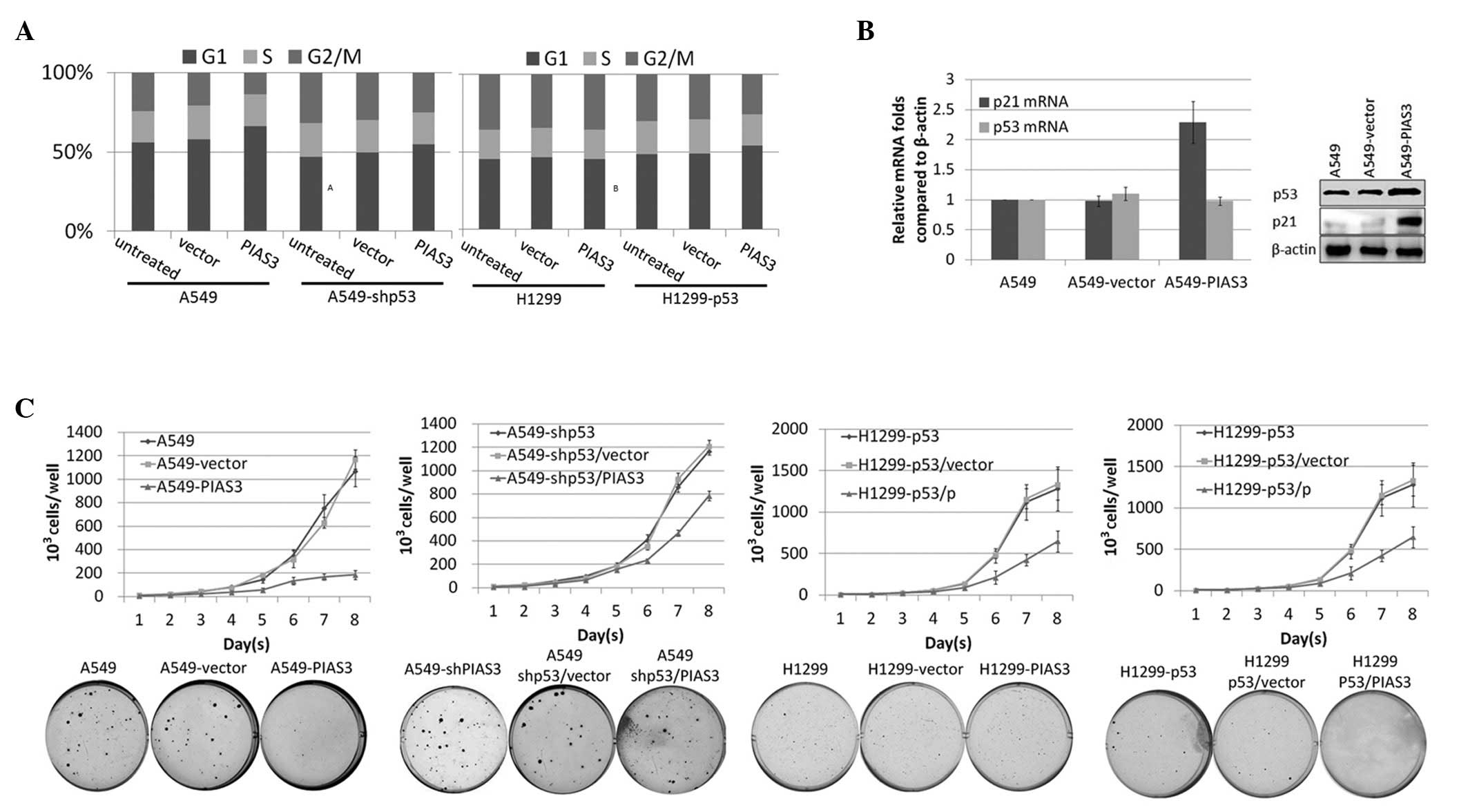|
1
|
Shaper NJ, Harrison M and Bates T: Impact
of laparoscopic cholecystectomy on surgical training. Ann R Coll
Surg Engl. 78:39–42. 1996.PubMed/NCBI
|
|
2
|
Evans SC and Lozano G: The Li-Fraumeni
syndrome: an inherited susceptibility to cancer. Mol Med Today.
3:390–395. 1997. View Article : Google Scholar : PubMed/NCBI
|
|
3
|
Attardi LD and Jacks T: The role of p53 in
tumour suppression: lessons from mouse models. Cell Mol Life Sci.
55:48–63. 1999. View Article : Google Scholar : PubMed/NCBI
|
|
4
|
Choi J and Donehower LA: p53 in embryonic
development: maintaining a fine balance. Cell Mol Life Sci.
55:38–47. 1999. View Article : Google Scholar : PubMed/NCBI
|
|
5
|
Piette J, Neel H and Maréchal V: Mdm2:
keeping p53 under control. Oncogene. 15:1001–1010. 1997. View Article : Google Scholar : PubMed/NCBI
|
|
6
|
Karanicolas J and Brooks CL III: The
structural basis for biphasic kinetics in the folding of the WW
domain from a forming-binding protein: Lessons for protein design?
Proc Natl Acad Sci USA. 100:3954–3959. 2003. View Article : Google Scholar : PubMed/NCBI
|
|
7
|
Kussie PH, Gorina S, Marechal V, Elenbaas
B, Moreau J, Levine AJ and Pavletich NP: Structure of the MDM2
oncoprotein bound to the p53 tumor suppressor transactivation
domain. Science. 274:948–953. 1996. View Article : Google Scholar : PubMed/NCBI
|
|
8
|
Momand J, Zambetti GP, Olson DC, George D
and Levine AJ: The mdm-2 oncogene product forms a complex with the
p53 protein and inhibits p53-mediated transactivation. Cell.
69:1237–1245. 1992. View Article : Google Scholar : PubMed/NCBI
|
|
9
|
Haupt Y, Maya R, Kazaz A and Oren M: Mdm2
promotes the rapid degradation of p53. Nature. 387:296–299. 1997.
View Article : Google Scholar : PubMed/NCBI
|
|
10
|
Kamijo T, Weber JD, Zambetti G, Zindy F,
Roussel MF and Sherr CJ: Functional and physical interactions of
the ARF tumor suppressor with p53 and Mdm2. Proc Natl Acad Sci USA.
95:8292–8297. 1998. View Article : Google Scholar : PubMed/NCBI
|
|
11
|
Pomerantz J, Schreiber-Agus N, Liégeois
NJ, Silverman A, Alland L, Chin L, Potes J, Chen K, Orlow I, Lee
HW, Cordon-Cardo C and DePinho RA: The Ink4a tumor suppressor gene
product, p19Arf, interacts with MDM2 and neutralizes MDM2’s
inhibition of p53. Cell. 92:713–723. 1998.PubMed/NCBI
|
|
12
|
Honda R and Yasuda H: Association of
p19(ARF) with Mdm2 inhibits ubiquitin ligase activity of Mdm2 for
tumor suppressor p53. EMBO J. 18:22–27. 1999. View Article : Google Scholar : PubMed/NCBI
|
|
13
|
Tao W and Levine AJ: P19(ARF) stabilizes
p53 by blocking nucleo-cytoplasmic shuttling of Mdm2. Proc Natl
Acad Sci USA. 96:6937–6941. 1999. View Article : Google Scholar : PubMed/NCBI
|
|
14
|
Weber JD, Taylor LJ, Roussel MF, Sherr CJ
and Bar-Sagi D: Nucleolar Arf sequesters Mdm2 and activates p53.
Nat Cell Biol. 1:20–26. 1999. View
Article : Google Scholar : PubMed/NCBI
|
|
15
|
Shadfan M, Lopez-Pajares V and Yuan ZM:
MDM2 and MDMX: Alone and together in regulation of p53. Transl
Cancer Res. 1:88–89. 2012.PubMed/NCBI
|
|
16
|
Chen J, Marechal V and Levine AJ: Mapping
of the p53 and mdm-2 interaction domains. Mol Cell Biol.
13:4107–4114. 1993.PubMed/NCBI
|
|
17
|
Momand J, Zambetti GP, Olson DC, George D
and Levine AJ: The mdm-2 oncogene product forms a complex with the
p53 protein and inhibits p53-mediated transactivation. Cell.
69:1237–1245. 1992. View Article : Google Scholar : PubMed/NCBI
|
|
18
|
Takimoto R, Wang W, Dicker DT, Rastinejad
F, Lyssikatos J and el-Deiry WS: The mutant p53-conformation
modifying drug, CP-31398, can induce apoptosis of human cancer
cells and can stabilize wild-type p53 protein. Cancer Biol Ther.
1:47–55. 2002. View Article : Google Scholar : PubMed/NCBI
|
|
19
|
el-Deiry WS, Tokino T, Velculescu VE, Levy
DB, Parsons R, Trent JM, Lin D, Mercer WE, Kinzler KW and
Vogelstein B: WAF1, a potential mediator of p53 tumor suppression.
Cell. 75:817–825. 1993. View Article : Google Scholar : PubMed/NCBI
|
|
20
|
Martin K, Trouche K, Hagemeier C, Sørensen
TS, La Thangue NB and Kouzarides T: Stimulation of E2F1/DP1
transcriptional activity by MDM2 oncoprotein. Nature. 375:691–694.
1995. View
Article : Google Scholar : PubMed/NCBI
|
|
21
|
Lughran O and La Thangue NB: Apoptotic and
growth-promoting activity of E2F modulated by MDM2. Mol Cell Biol.
20:2186–2197. 2000. View Article : Google Scholar : PubMed/NCBI
|
|
22
|
Grossman SR, Perez M, Kung AL, et al:
P300/MDM2 complexes participate in Mdm2-mediated p53 degradation.
Mol Cell. 2:405–415. 1998. View Article : Google Scholar : PubMed/NCBI
|
|
23
|
Avantaggiati ML, Ogryzko V, Gardner K,
Giordano A, Levine AS and Kelly K: Recruitment of p300/CBP in
p53-dependent signal pathways. Cell. 89:1175–1184. 1997. View Article : Google Scholar : PubMed/NCBI
|
|
24
|
Kubbutat MH, Jones SN and Vousden KH:
Regulation of p53 stability by Mdm2. Nature. 387:299–303. 1997.
View Article : Google Scholar : PubMed/NCBI
|
|
25
|
Yu ZK, Geyer RK and Maki CG:
MDM2-dependent ubiquitination of nuclear and cytoplasmic P53.
Oncogen. 19:5892–5897. 2000. View Article : Google Scholar : PubMed/NCBI
|
|
26
|
Fang S, Jensen JP, Ludwig RL, Vousden KH
and Weissman AM: Mdm2 is a RING finger-dependent ubiquitin protein
ligase for itself and p53. J Biol Chem. 275:8945–8951. 2000.
View Article : Google Scholar : PubMed/NCBI
|
|
27
|
Geyer RK, Yu ZK and Maki CG: The MDM2
RING-finger domain is required to promote p53 nuclear export. Nat
Cell Biol. 2:569–573. 2000. View
Article : Google Scholar : PubMed/NCBI
|
|
28
|
Xirodimas DP, Stephen CW and Lane DP:
Compartmentalization of p53 and Mdm2 is a major determinant for
Mdm2-mediated degradation of p53. Exp Cell Res. 270:66–77. 2001.
View Article : Google Scholar : PubMed/NCBI
|
|
29
|
Barak Y, Juven T, Haffner R and Oren M:
Mdm2 expression is induced by wild type p53 activity. EMBO J.
12:461–468. 1993.PubMed/NCBI
|
|
30
|
Durocher D and Jackson SP: DNA-PK, ATM and
ATR as sensors of DNA damage: variations on a theme? Curr Opin Cell
Biol. 13:225–231. 2001. View Article : Google Scholar : PubMed/NCBI
|
|
31
|
Chehab NH, Malikzay A, Stavridi ES and
Halazonetis TD: Phosphorylation of Ser-20 mediates stabilization of
human p53 in response to DNA damage. Proc Natl Acad Sci USA.
96:13777–13782. 1999. View Article : Google Scholar : PubMed/NCBI
|
|
32
|
Dumaz N, Milne DM, Jardine LJ and Meek DW:
Critical roles for the serine 20, but not the serine 15,
phosphorylation site and for the polyproline domain in regulating
p53 turnover. Biochem J. 359:459–464. 2001. View Article : Google Scholar : PubMed/NCBI
|
|
33
|
Unger T, Juven-Gershon T, Moallem E,
Berger M, Vogt Sionov R, Lozano G, Oren M and Haupt Y: Critical
role for Ser20 of human p53 in the negative regulation of p53 by
Mdm2. EMBO J. 18:1805–1814. 1999. View Article : Google Scholar : PubMed/NCBI
|
|
34
|
Stindt MH, Carter S, Vigneron AM, Ryan KM
and Vousden KH: MDM2 promotes SUMO-2/3 modification of p53 to
modulate transcriptional activity. Cell Cycle. 10:3176–3188. 2001.
View Article : Google Scholar : PubMed/NCBI
|
|
35
|
Lee SW, Lee MH, Park JH, Kang SH, Yoo HM,
Ka SH, Oh YM, Jeon YJ and Chung CH: SUMOylation of hnRNP-K is
required for p53-mediated cell-cycle arrest in response to DNA
damage. EMBO J. 31:4441–4452. 2012. View Article : Google Scholar : PubMed/NCBI
|
|
36
|
Lin J, Chen J, Elenbaas B and Levine AJ:
Several hydrophobic amino acids in the p53 amino-terminal domain
are required for transcriptional activation, binding to mdm-2 and
the adenovirus 5 E1B 55-kD protein. Genes Dev. 8:1235–1246. 1994.
View Article : Google Scholar : PubMed/NCBI
|
|
37
|
Poyurovsky MV, Katz C, Laptenko O,
Beckerman R, Lokshin M, Ahn J, Byeon IJ, Gabizon R, Mattia M,
Zupnick A, Brown LM, Friedler A and Prives C: The C-terminus of p53
binds the N-terminal domain of MDM2. Nat Struct Mol Biol.
17:982–989. 2010. View Article : Google Scholar : PubMed/NCBI
|












